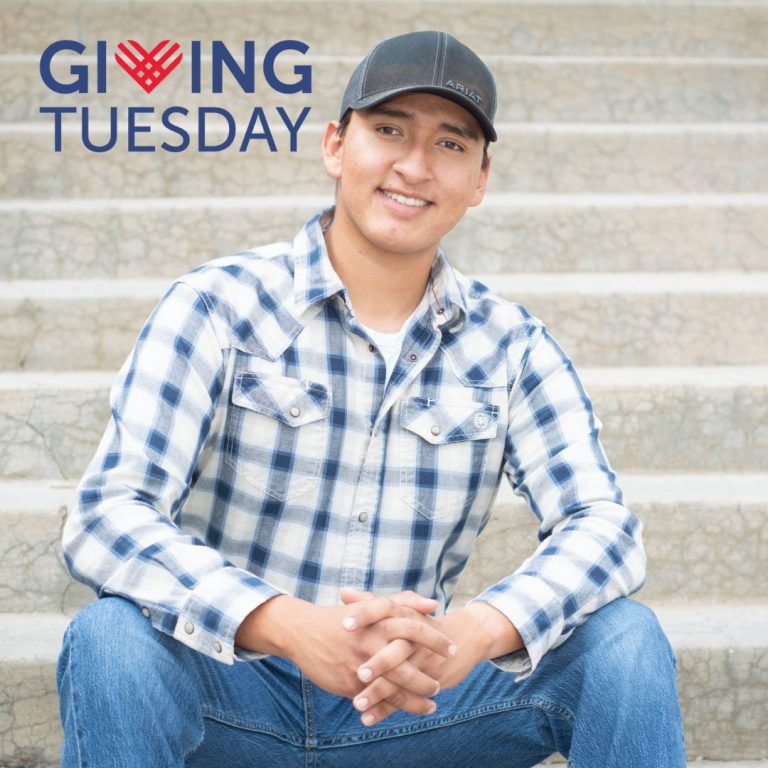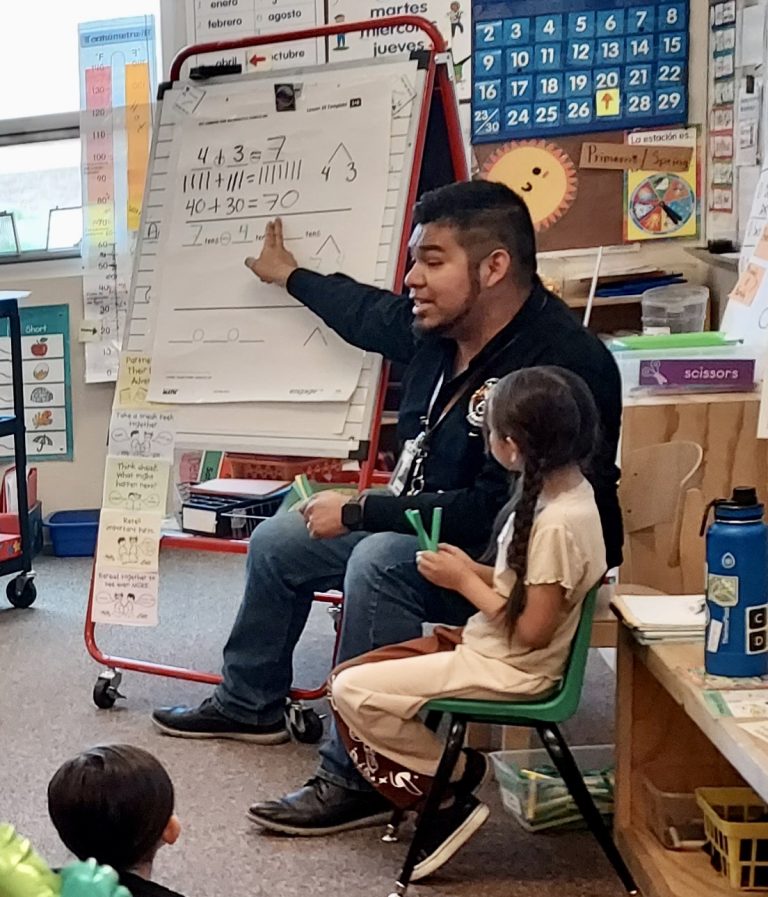During the 2018 fall semester, the LANL Foundation K–12 Program team answered calls for support related to New Mexico’s newly adopted version of the Next Generation Science Standards (NGSS). NM STEM Ready Standards raise the level of rigor and complexity for not only science subject matter but also how content is delivered through inquiry explorations and communication of core ideas, concepts and practices that span lessons, grades, and science and engineering disciplines.
The Foundation-led ISEC program has a long-standing partnership with eight school districts, with embedded inquiry STEM materials, NGSS-aligned curriculum and teacher training and support at the elementary level. So supporting district leaders in their plans to bring middle and high school teachers up to speed on the new standards was a natural extension of this work.
LANL Foundation STEM Project Coordinator Dave Forester collaborated with staff in Española, Santa Fe and Los Alamos Public Schools to prepare a series of exploratory training lessons that help illustrate NGSS, putting teachers in roles of learners and leaders in the classroom. ISEC Professional Development Coordinator Doris Rivera also assisted with the trainings. Middle and high school science teachers were able to focus on some or all of these engaging sessions. Elementary teachers from Los Alamos who are not part of ISEC were offered professional development through this program as well.
Española middle and high school teachers build a structure and discuss force in the context of NGSS.
The first training allowed teachers to experience a science lesson built around the multi-dimensionality of NGSS. High School teachers made rock salt ice cream while they collected temperature data. Middle school teachers made a self-supporting structure using butter knifes and then created diagrams detailing the force pairs present in their structures. Using this lesson, teachers unpacked the standards to understand how they are bundled.
Santa Fe middle school teachers discuss their model.
A second day of training explored how scientific knowledge can be used to explain or predict a specific phenomenon, an observable event that occurs in the universe. Juice from an orange peel will pop certain types of balloons, while the juice from the fruit of an orange will not. They discussed how phenomena can energize the science classroom and create equity. The remainder of this working session was dedicated to collaboratively learning how to build NGSS-aligned lesson plans.
Middle school calculations and elementary school engineering exploration in Los Alamos.
Some groups opted for a third day of training to engage in an engineering activity tied to life science, centered around windborne seed dispersal. This session demonstrated how teachers can bring engineering practices to the specific science discipline they teach.
The group of Santa Fe Public Schools high school teachers started the engineering/life science lesson by observing a seed from the Lunaria plant, commonly know as a money plant or silver dollar, and talking about its characteristics through the student lens. Then an informational piece about different types of seeds was introduced, with a suggested strategy that encourages students to read out loud to each other to make sense of a complex text.
Aoife Runyan, Digital Coach in Santa Fe Public Schools (SFPS), discussed the importance of reading together at any age. Using open-ended, lead-in phrases in their dialogue encourages students to think aloud and also sets the tone for working collaboratively and builds a safe learning environment for self-expression.
“Reading information out loud or hearing it then writing down ideas or sharing internal thoughts with a partner allows some to process the information differently than reading silently,” said Chari Kauffman, District Science & Math Coordinator.
“This is a great way to introduce and have a discussion around new vocabulary,” added Digital Coach Chrissy Romero. This lesson included words like iterate, membranous, dispersal, plumose and diaspore.
Then the engineering design challenge was revealed. In small groups, the teacher-learners were asked to “design, build and test a windborne seed dispersal mechanism that travels at least one meter horizontally.” And the fun began.
They collaborated on initial designs modeled after different types of seeds found in nature like gliders, parachutes, flutterers or helicopters. Forester suggested that they plan out the proposed design and sketch it before they built.
“You have to get into a design with intentionality,” he said. “But does every design have to be drawn to be built? No. If your partner designs with bits and pieces, validate that. Everyone approaches the process differently.”
Romero held up a sample science notebook to show the structure and how students even at in elementary school can demonstrate their learning through writing, drawings, data collection and graphing.
After sketching ideas and annotating the designs in their notebooks, the groups gathered materials provided like paper, feathers, cotton balls, pipe cleaners, tape and hot glue to build their dispersal system to move a pumpkin seed within the defined constraints.
“Next, test your model and collect data on the distance traveled,” said Forester. “Troubleshoot, modify and iterate your design, then retest and compare the data.”
Each group dropped their seed in front of a fan and took measurements. Some systems required minor tinkering to improve performance, while others warranted more radical reengineering.
Each team entered data from three trials into Google Classroom, a free, shared platform that allowed the whole class to compare results in real time. The graphing feature revealed the iterative nature of each design through the data.
The inquiry lesson ended in a Meaning Making Circle that brings the whole class together to discuss the results—what they observed, what worked, what didn’t work, what they would do differently. Back in small groups, a deep dive into the lesson took place where the teachers collaboratively reflected on the teaching strategies they used and identified the disciplinary core ideas, crosscutting concepts and science and engineering practices outlined in NGSS.
“This lesson is all about natural selection and adaptation and evolution,” said one teacher.
“We discussed the flow of energy with the movement of wind, cause and effect, and patterns,” added another.
“This relates to ecosystem dynamics. The environment that a tree is in affects what its chances of survival will be. It’s about competition for limited resources.”
“We engaged, explored, explained, elaborated, evaluate evidence and claims. We did all of this.”
Using the structure of this exploration, the teachers developed a model exemplary lesson to apply in their daily teaching practice, using the lesson plan format and filling in the elements and a step-by-step process.
Kaufman initiated this work with the LANL Foundation because she knows the value of this type of training and channeling resources to teachers. She wants to get teachers out of their “silos,” knowing that the most valuable resource they have is each other and their ability to collaborate.
“Helping them, supporting them, offering new teaching strategy, introducing meaning making to pull it all together—it’s exciting. And building the structure of a lesson that they can apply in their own class within the grounding of the NGSS is powerful.”
The open-ended design cycle and inquiry process are important for students to experience rather than the teacher steering them to get a desired result. The goal is for teachers to create the structure and guide the lesson while also grasping the dimensionality of the standards, making them explicit and meeting the required implementation.
Special thanks to all those who planned and participated in these sessions across the three districts.
LANL Foundation offers each science teacher who attended a copy of the NGSS two-book set. Additional trainings may be scheduled by contacting Dave Forester at 505-753-8890 or dforester@lanlfoundation.org. Resources are also online at www.nextgenscience.org.
“I think the new standards are complex, and it takes awhile to understand, but NGSS is a much more effective system. This training helps to decipher the specifics and helped me break down the thinking process. I’m getting more comfortable to be able to apply it in my class. I’m doing more upfront with projects and the hands-on experiences. It hooks the students and engages their brain with curiosity first, then I can backload the information. ” – Karen Hagele, science teacher at ECO (Early College Opportunities) trade magnet school in Santa Fe.
“This training presents some additional creative ways for students to learn with innovative exercises, and the standards are covered. The discussion piece helps me to understand how science should be delivered. I can see using this in my classroom and helping my students.” – Gil Gonzales, Santa Fe High School chemistry teacher
Additional feedback
“The presenters were very knowledgeable, these strands apply to class content, [and] presenters were highly effective at presenting information…” – Española Public Schools teacher
“This was an outstanding training! I will definitely use the knowledge and materials garnered here. It was so helpful going through the lessons you modeled. I loved the Meaning Making Circle and the phenomenon checklist!!” – Los Alamos Public Schools teacher
“Thank you both so much! As I have moved around the district the last 2 days, several teachers have come up to me to say what a great learning day it was.” – Los Alamos Public Schools administrator
“This is a totally new way to teach. No lectures, short readings, more hands-on discovery and conversations.” – Santa Fe Public Schools teacher
“I love getting to work with colleagues across the district and getting their perspectives and ideas. I feel the activities to date have been very supportive in transitioning to the new standards” – Santa Fe Public Schools teacher


